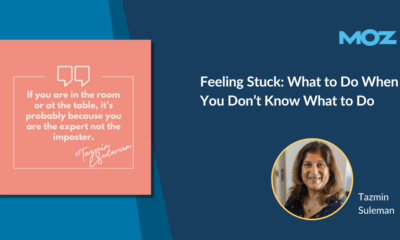SOCIAL
Facebook Considers Tougher Transparency Rules in Response to Tactics Used by Bloomberg Campaign

We’re less than a month into the official US Presidential campaign cycle, and already Facebook’s advanced rules around political content are being tested.
A week after implementing new rules around the use of memes by political candidates, in response to tactics being deployed by the Bloomberg campaign, Facebook is now once again being forced to re-assess its process, this time with respect to how Bloomberg is using campaign staffers to distribute his messaging through their personal networks.
As per CNBC:
“Bloomberg’s campaign is hiring more than 500 deputy field organizers, a job which includes mobilizing supporters for get-out-the-vote efforts and engaging friends to support Bloomberg for president – which can include sharing on social networks. But Facebook is concerned about the lack of transparency around Bloomberg’s employees unidentified posts, and doesn’t want to undercut all the work the company has done around transparency by allowing a campaign to circumvent Facebook’s rules.”
Essentially, Facebook is now looking into whether personal posts from campaign staffers and supporters need to also come with a disclaimer to signify their affiliation.
In some ways this seems like a stretch – people are free to share what they like on the platform, regardless of their professional ties – but then again, if this is built into a contract with the Bloomberg campaign, and a level of sharing is required or mandated as part of such duties, that muddies the waters significantly.
It seems that, despite Facebook’s many efforts, there are still some holes in its political campaign policies.
Will that become a bigger problem moving forward?
With the rise of social media as a tool for political messaging, there are some significant questions around the power of social to influence the vote – and just how powerful Facebook, in particular, can be for shifting public sentiment.
Clearly, political operatives see major potential in the platform. The Trump campaign has spent $20 million on Facebook ads in 2019 alone, while incoming Presidential candidate Mike Bloomberg has already blown them away, spending $48.5 million on Facebook ads since last May.
Of course, for Bloomberg, who has a net worth of $65.2 billion, this is a relatively minor outlay – but will it work? Can the person with the most money to spend on social media ads dominate the discussion enough to actually win the vote?
At this stage, that seems unlikely. The Guardian recently conducted an analysis of Bloomberg’s campaign ads, and while there are certainly a lot of them, its assessment found that they lack political substance, and don’t properly utilize Facebook’s advanced audience targeting capacity, which has ultimately seen them fail to connect with voter pain points in the same way the Trump campaign’s efforts have.

But there are a lot of them – take a look at this chart from The Guardian in regards to Facebook ad impressions in 2020.

Yet, without the same political bite, and in-depth targeting focus of the Trump campaign – which one Facebook exec said was the “the single best digital ad campaign I’ve ever seen” – it does seem like Bloomberg is failing to gain traction. Add to that a poor showing in the recent Democratic debate, and it would appear that candidates need more than Facebook ads to win an election.
But then again, there is precedent for those that can win the mentions race going on to win the final vote.
Indeed, various research reports have shown that mention volume alone is the best indicator in predicting vote outcomes based on social media activity.
A study conducted by Dublin City University in 2011 found that tweet volume was “the single biggest predictive variable” in election results, based on their analysis of political sentiment and prediction modeling, while another study conducted by the Technical University of Munich in 2010 found that:
“The mere number of tweets reflects voter preferences and comes close to traditional election polls.”
Maybe this is what Bloomberg is hoping for – by dominating the media cycle, maybe he can go on to dominate the polls. In this sense, it would be less about the specifics of his messaging and more about his capacity to ‘flood the zone’, a tactic used by former Trump strategist Steve Bannon to maximize Trump’s messaging.
Maybe, with more money, Bloomberg will have greater capacity to dominate proceedings, and dwarf the arguments of his opponents. That doesn’t feel likely at this stage. But that could be – or could have been – the Bloomberg campaign’s plan.
SOCIAL
Snapchat Explores New Messaging Retention Feature: A Game-Changer or Risky Move?

In a recent announcement, Snapchat revealed a groundbreaking update that challenges its traditional design ethos. The platform is experimenting with an option that allows users to defy the 24-hour auto-delete rule, a feature synonymous with Snapchat’s ephemeral messaging model.
The proposed change aims to introduce a “Never delete” option in messaging retention settings, aligning Snapchat more closely with conventional messaging apps. While this move may blur Snapchat’s distinctive selling point, Snap appears convinced of its necessity.
According to Snap, the decision stems from user feedback and a commitment to innovation based on user needs. The company aims to provide greater flexibility and control over conversations, catering to the preferences of its community.
Currently undergoing trials in select markets, the new feature empowers users to adjust retention settings on a conversation-by-conversation basis. Flexibility remains paramount, with participants able to modify settings within chats and receive in-chat notifications to ensure transparency.
Snapchat underscores that the default auto-delete feature will persist, reinforcing its design philosophy centered on ephemerality. However, with the app gaining traction as a primary messaging platform, the option offers users a means to preserve longer chat histories.
The update marks a pivotal moment for Snapchat, renowned for its disappearing message premise, especially popular among younger demographics. Retaining this focus has been pivotal to Snapchat’s identity, but the shift suggests a broader strategy aimed at diversifying its user base.
This strategy may appeal particularly to older demographics, potentially extending Snapchat’s relevance as users age. By emulating features of conventional messaging platforms, Snapchat seeks to enhance its appeal and broaden its reach.
Yet, the introduction of message retention poses questions about Snapchat’s uniqueness. While addressing user demands, the risk of diluting Snapchat’s distinctiveness looms large.
As Snapchat ventures into uncharted territory, the outcome of this experiment remains uncertain. Will message retention propel Snapchat to new heights, or will it compromise the platform’s uniqueness?
Only time will tell.
SOCIAL
Catering to specific audience boosts your business, says accountant turned coach

While it is tempting to try to appeal to a broad audience, the founder of alcohol-free coaching service Just the Tonic, Sandra Parker, believes the best thing you can do for your business is focus on your niche. Here’s how she did just that.
When running a business, reaching out to as many clients as possible can be tempting. But it also risks making your marketing “too generic,” warns Sandra Parker, the founder of Just The Tonic Coaching.
“From the very start of my business, I knew exactly who I could help and who I couldn’t,” Parker told My Biggest Lessons.
Parker struggled with alcohol dependence as a young professional. Today, her business targets high-achieving individuals who face challenges similar to those she had early in her career.
“I understand their frustrations, I understand their fears, and I understand their coping mechanisms and the stories they’re telling themselves,” Parker said. “Because of that, I’m able to market very effectively, to speak in a language that they understand, and am able to reach them.”Â
“I believe that it’s really important that you know exactly who your customer or your client is, and you target them, and you resist the temptation to make your marketing too generic to try and reach everyone,” she explained.
“If you speak specifically to your target clients, you will reach them, and I believe that’s the way that you’re going to be more successful.
Watch the video for more of Sandra Parker’s biggest lessons.
SOCIAL
Instagram Tests Live-Stream Games to Enhance Engagement

Instagram’s testing out some new options to help spice up your live-streams in the app, with some live broadcasters now able to select a game that they can play with viewers in-stream.
As you can see in these example screens, posted by Ahmed Ghanem, some creators now have the option to play either “This or That”, a question and answer prompt that you can share with your viewers, or “Trivia”, to generate more engagement within your IG live-streams.
That could be a simple way to spark more conversation and interaction, which could then lead into further engagement opportunities from your live audience.
Meta’s been exploring more ways to make live-streaming a bigger consideration for IG creators, with a view to live-streams potentially catching on with more users.
That includes the gradual expansion of its “Stars” live-stream donation program, giving more creators in more regions a means to accept donations from live-stream viewers, while back in December, Instagram also added some new options to make it easier to go live using third-party tools via desktop PCs.
Live streaming has been a major shift in China, where shopping live-streams, in particular, have led to massive opportunities for streaming platforms. They haven’t caught on in the same way in Western regions, but as TikTok and YouTube look to push live-stream adoption, there is still a chance that they will become a much bigger element in future.
Which is why IG is also trying to stay in touch, and add more ways for its creators to engage via streams. Live-stream games is another element within this, which could make this a better community-building, and potentially sales-driving option.
We’ve asked Instagram for more information on this test, and we’ll update this post if/when we hear back.
-

 WORDPRESS7 days ago
WORDPRESS7 days ago10 WordPress Influencers to Follow in 2024 – WordPress.com News
-

 MARKETING7 days ago
MARKETING7 days agoFeeling Stuck: What to Do When You Don’t Know What to Do
-

 PPC6 days ago
PPC6 days agoCompetitor Monitoring: 7 ways to keep watch on the competition
-

 PPC5 days ago
PPC5 days agoA History of Google AdWords and Google Ads: Revolutionizing Digital Advertising & Marketing Since 2000
-

 WORDPRESS6 days ago
WORDPRESS6 days agoThrive Architect vs Divi vs Elementor
-

 SEARCHENGINES6 days ago
SEARCHENGINES6 days agoMore Google March 2024 Core Update Ranking Volatility
-

 PPC6 days ago
PPC6 days ago31 Ready-to-Go Mother’s Day Messages for Social Media, Email, & More
-

 WORDPRESS5 days ago
WORDPRESS5 days agoTurkish startup ikas attracts $20M for its e-commerce platform designed for small businesses


